Top Sp 500 Brokers for 2026
We found 11 online brokers that are appropriate for Trading Sp 500.
Best Sp 500 Brokers Guide
Analysis by Andrew Blumer, Updated and fact-checked by Senad Karaahmetovic, Last updated – December 16, 2025
S&P 500 Brokers

Stepping into the world of trading with a focus on the S&P 500 index (SPX) means engaging with one of the most influential benchmarks in global finance. The S&P 500 tracks the performance of 500 leading U.S. companies from Apple and Microsoft to Netflix and Tesla across major industries, offering a real time gauge of the American economy. Trading the SPX brings both opportunities and risks, so selecting a reputable broker is essential.
After 20 years as a trader, I’ve learned that regulation is the foundation of trust. Always choose a broker licensed by a top tier authority like the FCA (UK), ASIC (Australia), or the SEC (USA). This ensures fraud protection, transparent reporting, and fair market access.
Direct market access is critical especially during volatile periods like the 2024 Fed rate hike announcements, when the VIX spiked above 30. Look for brokers offering real time SPX quotes, sub millisecond execution, and deep liquidity with brokers like IC Markets, eToro and XTB.
Fees and commissions can make or break your strategy. While low spreads are attractive, evaluate the overall value a broker provides. For example, IC Markets offers S&P 500 trading with zero commission on standard CFDs plus advanced charting tools and educational webinars features that justify a slightly higher spread for many traders.
With these criteria in mind, I’ve distilled decades of hands on experience into a concise guide to the best SPX brokers of 2025. Whether you’re just starting out or optimizing your current setup, this overview will help you choose a partner that supports both your short term trades and long term growth in the S&P 500.
Best S&P 500 (SPX) Brokers
This SP500 brokers guide is not in any way financial advice. Trading the SP500 is very high risk and you may lose any money you fund to a live trading account if a SP500 trade does not go in your favour.
IC Markets
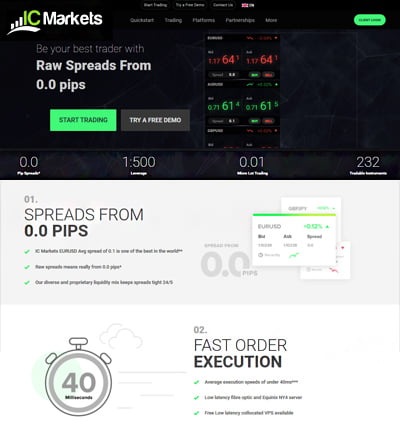
IC Markets is a standout for S&P 500 day trading and scalping, thanks to its tight spreads and lightning fast execution. For traders using high frequency strategies, minimizing slippage is crucial and IC Markets delivers. It’s regulated by reputable authorities and offers a wide range of instruments beyond indices, adding depth to your trading portfolio. While powerful, trading the SPX here still demands discipline and vigilance due to market volatility.
eToro

eToro is a great entry point for beginners looking to trade the S&P 500. Its CopyTrading feature allows users to replicate the strategies of top performing traders, making it ideal for learning while investing. With over 34 million users, the platform offers both insight and interaction. Regulation is strong, and the platform is user friendly and social, but traders should still take the time to research independently before copying others.
RoboForex
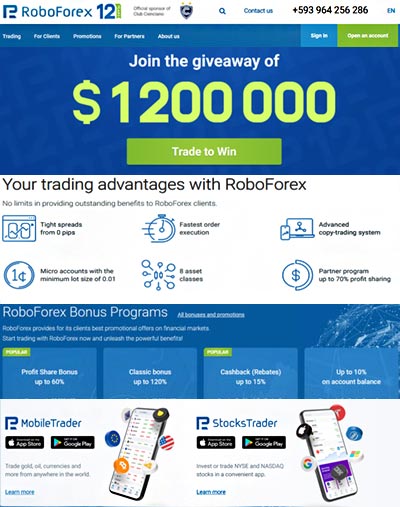
RoboForex is well suited for traders who prefer MetaTrader platforms (MT4 and MT5) for SPX trading. It offers good execution speed and a smooth interface, making it reliable for short and medium term strategies. However, its high leverage options require caution and experience, as they can magnify both profits and losses on volatile index trades.
XTB

XTB is ideal for those who value in depth analysis and educational content. Their learning resources and real time insights make it an excellent choice for traders who want to build a deeper understanding of S&P 500 market dynamics. While theory is essential, XTB also offers the tools needed to apply it effectively through practical trading experience.
XM
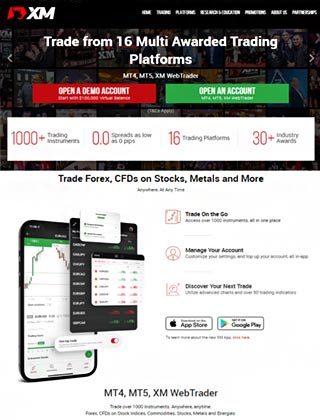
XM combines strong customer support with a diverse set of instruments, including the S&P 500. It’s regulated and dependable, offering an environment suited for both beginners and seasoned traders. However, mastering SPX trading still requires more than a supportive platform you’ll need sharp technical and fundamental insight.
AvaTrade
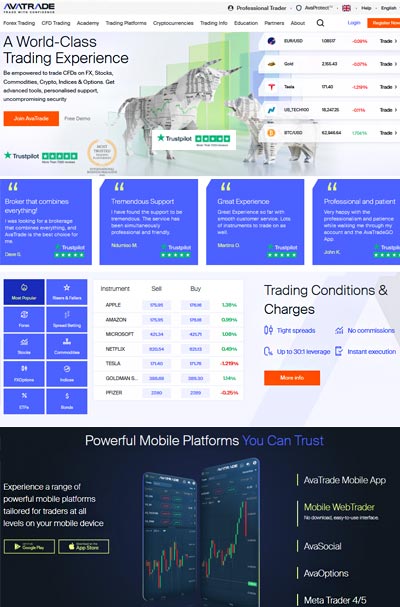
AvaTrade offers a versatile and regulated trading environment for S&P 500 traders. Its AvaTradeGo and AvaSocial platforms enhance accessibility and community interaction. The no commission structure and solid selection of instruments allow traders to diversify without being burdened by high fees. It’s well suited to both conservative and active trading styles.
FP Markets
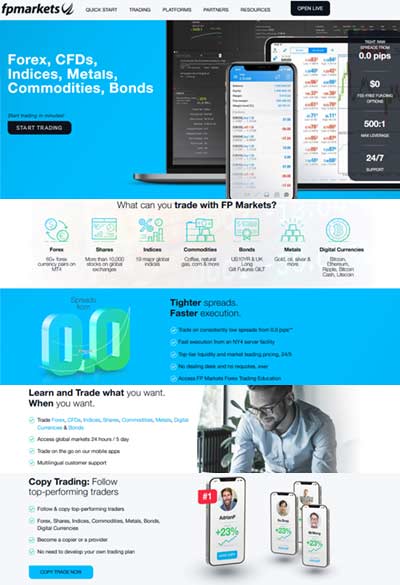
FP Markets supports efficient SPX trading through advanced tools on MT4 and MT5. Known for low spreads and fast execution, it’s a solid pick for traders who rely on tight timing and cost effective transactions. The platform caters well to those who trade actively across multiple markets.
Pepperstone
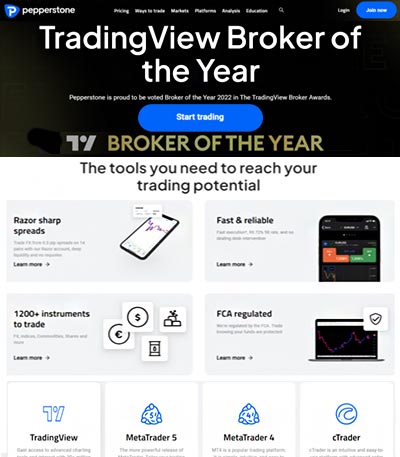
Pepperstone delivers strong performance for SPX traders through its Razor Account, offering spreads from 0 pips and access to over 1200 instruments. Regulated and user friendly, it’s a strong choice for those prioritizing both cost efficiency and platform reliability. The simple setup process is another plus for newcomers eager to get started.
When selecting a broker for S&P 500 trading, look beyond just spreads. Consider regulatory status, execution speed, trading platforms, customer support, and available research tools. Always ensure your chosen broker is authorized by major bodies like the SEC, FINRA, FCA, or ASIC, so you can trade with confidence and legal protection.
How To Trade The S&P 500 Index


Trading the S&P 500 offers many paths, each with its own mix of risk and reward. Let’s explore the most popular and effective methods. This index isn’t just a U.S. market benchmark it’s a dynamic battlefield where opportunity and danger collide. Below, you’ll find the key instruments traders use to tap into its power.
Buying Individual S&P 500 Stocks
At its heart are the 500 largest U.S. public companies. You might pick up shares of Tesla after its recent AI push, ride the cloud computing wave at Amazon, or lean on steady dividend income from Procter & Gamble. By selecting your favorites, you get direct exposure to their stories and, by extension, to broader market swings.
Exchange Traded Funds (ETFs)
S&P 500 ETFs remain the simplest route to broad exposure. These funds mirror the index by holding all its components. Popular choices include SPDR S&P 500 ETF Trust (SPY), prized for its liquidity, and Vanguard S&P 500 ETF (VOO), known for rock bottom fees. Whether you’re a buy and hold investor or an active trader, these ETFs deliver diversification in a single ticker.
Index Mutual Funds
Index mutual funds track the S&P 500 much like ETFs but settle trades only at day’s end. The Fidelity 500 Index Fund (FXAIX) and Vanguard 500 Index Fund Admiral Shares (VFIAX) stand out. They often have minimum buys say $3,000 but reward patient investors with ultra low expense ratios and automatic dividend reinvestment.
S&P 500 CFDs
CFDs (Contracts for Difference) appeal to experienced speculators. You don’t own any shares; instead, you wager on price movements. Long or short, leverage lets you control large positions with a small margin. Zero commission brokers like IC Markets and tight spreads make it cost efficient but remember: high leverage can magnify losses beyond your deposit.
Futures Contracts
S&P 500 futures bring even more leverage and require robust risk controls. You agree to exchange the index at a set price on a future date. A newer twist is the Micro E mini S&P 500 Futures (MES) on the CME smaller contracts tailored for retail traders. Yet even these demand discipline: margin calls come fast in volatile markets.
Options on the S&P 500
Options grant the right but not the obligation to trade the index at a specified price before expiration. Use them to hedge a portfolio or chase income through covered calls on SPY. Complex strategies straddles, iron condors, vertical spreads can profit from volatility shifts. But misuse can burn capital quickly, so a solid grasp of Greeks is essential.
Key Considerations Before You Trade

Define Your Strategy
Research the index’s behavior under different conditions. Are you swinging for quick gains on Fed announcements? Or building long term wealth via buy and hold ETFs? Clarify your risk appetite, time frame, and goals. A plan reduces emotion driven mistakes.
Mind the Costs
Fees eat into returns. Account for broker commissions, ETF expense ratios, mutual fund minimums, and bid ask spreads. With leveraged products like CFDs and futures, overnight funding fees can add up. Always calculate your true break even point before trading.
Watch Market Drivers
Inflation reports, Fed rate decisions, corporate earnings these all move the S&P 500. Stay on top of economic calendars and news feeds. Technical indicators like the VIX or moving averages can help time entries and exits.
Practice Rigorous Risk Management
Use stop loss and take profit orders to automate discipline. Position size based on your total capital. Never commit more than you can afford to lose. Diversify across instruments or sectors to avoid single asset blowups.
Understand Each Tool
ETFs: simple, low cost, great for most investors. Mutual Funds: excellent for retirement savings. CFDs: accessible and flexible, but high risk. Futures: powerful yet demanding. Options: versatile but complex. Know the liquidity, hours, margin, and margin requirements of each before diving in.
Whether you choose straightforward ETFs or sophisticated futures, success with the S&P 500 starts with knowledge, preparation, and unwavering risk control. Trade wisely!
What Makes the S&P 500 So Popular Among Traders?

I’ve relied on the S&P 500 throughout my investing journey as the most trusted Western index, watching how it reflects the performance of 500 of the largest publicly listed companies in the U.S. whenever I review my portfolio. Just last month, the index reached a new all time high after strong Q1 earnings from the tech giants.
Since it’s a weighted by market cap index, I quickly learned that the moves of giants like Apple and Microsoft carry far more weight in its daily swings than those of smaller peers, something I pay close attention to when I rebalance. In early June 2025, when Microsoft reported better than expected cloud revenue, I adjusted my allocations accordingly.
Over the years, I’ve appreciated how the S&P 500 spans all major sectors—from technology and healthcare to finance and consumer goods—giving me a single, diversified snapshot of the entire U.S. equity landscape. This spring, financial stocks rallied sharply as banks posted surprising Q1 profit growth.
I often benchmark my own returns against the S&P 500 and even use it directly through ETFs and mutual funds when I want broad exposure without picking individual stocks, tapping both passive and active strategies based on market conditions. Earlier this week, bond yields fell and pushed equity linked ETFs higher.
In my experience, the index’s movements reveal more than price action: they mirror shifts in corporate earnings, economic data, Fed decisions, and global headlines, guiding many of my tactical adjustments. For example, after the Federal Reserve hinted at pausing rate hikes in May 2025, I rotated into interest rate sensitive sectors.
Every quarter I track the S&P 500’s reaction to earnings reports and policy announcements, because it consistently gives me a clear lens into overall market sentiment and helps me fine tune my equity allocations. With geopolitical tensions easing this month, defensive stocks have begun to underperform, underscoring the importance of staying nimble.
Some of the largest companies in the S&P 500 by market capitalization include:
- Microsoft Corp.
- Apple Inc.
- Amazon.com Inc.
- Meta Platforms Inc. (Facebook)
- Berkshire Hathaway B
- Alphabet Inc. (GOOG)
- JP Morgan Chase & Co.
- Johnson & Johnson
- Visa Inc.
S&P 500 Inclusion Criteria and Calculation
The S&P 500 includes 500 of the most prominent publicly traded companies in the United States. However, inclusion in this index isn’t automatic it’s based on a set of eligibility criteria designed to ensure that the index reflects the broader U.S. economy. A company must meet several benchmarks related to size, liquidity, profitability, and listing status. For instance, it must have a market capitalization of at least $14.5 billion, and its shares must be actively traded with strong liquidity. At least 10% of its shares must be publicly available for trading, ensuring that the stock is not overly concentrated in the hands of insiders or institutions.
Additionally, the company must be headquartered in the United States, although it may operate globally. It also must have reported positive earnings in the last four consecutive quarters, which demonstrates financial viability. To prevent premature inclusion, the company should have been publicly traded for at least six to twelve months. Only companies listed on recognized U.S. exchanges like the NYSE or NASDAQ are considered. While the index seeks to represent all major sectors of the U.S. economy, there are no fixed quotas selection is based on the committee's judgment and adherence to the outlined standards.
The selection process is not static. A committee regularly reviews and adjusts the list of companies to maintain the index's integrity. These changes can be prompted by mergers, acquisitions, delistings, or shifts in financial performance. Announcements of updates are typically made a few days in advance, but reviews can happen at any time, adding to the index’s responsiveness to market changes.
In terms of calculation, the S&P 500 is a weighted by (market cap value) index. This means each sp500 company market cap on the markets determines its position in the sp500. Larger firms, such as NVIDIA, Apple, Microsoft, Tesla, Amazon, and Alphabet, have a heavier impact on the index’s movement than smaller companies. The weightings are calculated in real time, making the S&P 500 one of the most actively updated and reflective indicators in the financial world. As such, it remains a key benchmark not only for U.S. equities but also for global investors tracking the performance of American markets.

Types of Brokers for S&P 500 Trading
Online Brokers
The term S&P 500 brokers includes online platforms like eToro, IC Markets, RoboForex, XTB, and AvaTrade. These brokers offer easy access to S&P 500 ETFs and mutual funds, providing user friendly interfaces, educational resources, and low cost trading options suited for individual investors.
Full Service Brokers
Full service brokers such as Merrill Lynch, Morgan Stanley, and Goldman Sachs offer comprehensive services beyond simple trade execution. They provide expert investment advice, portfolio management, and access to a wide range of S&P 500 linked products, usually at a higher cost.
Discount Brokers
Discount brokers are ideal for investors who prefer to manage their own portfolios at a lower cost. Firms like Charles Schwab and TD Ameritrade offer access to S&P 500 ETFs and mutual funds with reduced fees and minimal advisory services.
Direct Market Access (DMA) Brokers
DMA brokers cater to sophisticated traders by offering direct access to stock exchanges. Through these brokers, traders can execute S&P 500 futures and options on platforms such as the Chicago Mercantile Exchange (CME), benefiting from faster trade execution and lower latency.
Robo Advisors
Robo advisors like Betterment, Wealthfront, and Vanguard Digital Advisor provide automated, algorithm driven investment services. These platforms typically include S&P 500 ETFs as part of diversified portfolios, appealing to investors seeking passive management and long term growth.
Comparing the S&P 500 With Other Major US Indices
| Aspect | S&P 500 | Nasdaq Composite | Dow Jones Industrial Average (DJIA) |
|---|---|---|---|
| Composition | 500 of the biggest U.S. corporations across industries. Think Apple, Microsoft, and lately, Arm Holdings since its 2023 IPO. It truly reflects the broad economy. | Over 3,300 listings, mostly tech and biotech names. Companies like NVIDIA, Zoom, and Coinbase dominate. It’s a hotbed for growth plays. | Just 30 blue chips. Firms such as Boeing, Goldman Sachs, and Home Depot. Heavy on industrials and consumer goods. |
| Methodology | Market cap weighted. Larger companies (e.g. Apple’s $3 trillion market value) move the needle most. Fairly intuitive. | Same market cap basis but skewed to fast growing tech. When NVIDIA jumps 5 % in a day, Nasdaq jumps, too. Volatile by design. | Price weighted index. Higher‐priced shares (think Goldman Sachs at over $400) carry extra weight. Can misrepresent real market breadth. |
| Market Representation | Best overall snapshot of U.S. equities. From energy giant ExxonMobil to biotech leader Moderna. A true economic barometer. | A proxy for the tech universe. Artificial intelligence names and cloud computing stocks set the tone. Investors watch it for sector trends. | Reflects the health of established industrials and consumer stalwarts. But at only 30 components, it lacks depth. More of a sentiment gauge than a full market mirror. |
| Performance | Generally steadier returns. In 2024 it rose about 12 %, thanks to a broad rally across financials and healthcare. Diversification is the key. | Often outpaces others and then plunges. From a 25 % surge in AI driven stocks to occasional 4 % one day falls. An adrenaline rush. | Can be misleading. A $10 swing in one high priced stock can move the entire index. Watch out for distortion. |
| Use Case | The go to benchmark for broad market ETFs. Think ticker SPY. Also a popular choice for target date funds. | Favored by growth investors and traders. Many tech focused ETFs mirror Nasdaq’s ups and downs. Perfect for sector specific plays. | Historical icon. From its first publication in 1896 to today’s giant multinationals. Used by commentators to gauge daily market mood. |

Understanding the Significance of S&P 500 Annual Returns
The S&P 500's annual total returns reveal the market’s fluctuations and growth potential over time, providing investors with valuable insight into long term performance and risk. These figures highlight how returns can vary widely from year to year, reflecting economic cycles, market sentiment, and global events. By examining these historical returns, investors can better appreciate the importance of a diversified portfolio and a disciplined investment approach to navigate both strong gains and downturns.
S&P 500 Annual Total Returns
- 2024: 25.02%
- 2023: 26.29%
- 2022: 18.11%
- 2021: 28.71%
- 2020: 18.40%
- 2019: 31.49%
- 2018: 4.38%
- 2017: 21.83%
- 2016: 11.96%
- 2015: 1.38%
- 2014: 13.69%
- 2013: 32.39%
- 2012: 16.00%
- 2011: 2.11%
- 2010: 15.06%
- 2009: 26.46%
- 2008: 37.00%
- 2007: 5.49%
- 2006: 15.79%
- 2005: 4.91%
- 2004: 10.88%
Key Factors Influencing the S&P 500 Price
Market Capitalization and Calculation
The S&P 500 remains a market cap weighted index, so tech giants like Apple and Microsoft each trading above $2 trillion in value carry substantial sway over its direction. To arrive at the daily index value, the combined float adjusted market caps of all 500 constituents are summed and then divided by an ever adjusting index divisor, which smooths out the effects of stock splits, spin offs, and share buybacks.
Economic Indicators and Corporate Earnings
Key macroeconomic readings such as Q1 2025 GDP growth of 2.1%, a 3.8% unemployment rate, and a 4.5% core inflation rate often set the tone for equity markets. At the same time, quarterly reports like Amazon’s latest beat and raise in April 2025 can spark rallies, while cautious forward guidance from Netflix or Tesla can trigger sharp pullbacks.
Global Events and Monetary Policy
Ongoing U.S. China tariff negotiations, renewed tensions in Eastern Europe, and the recent lifting of sanctions on Iran all introduce elements of risk and opportunity. Meanwhile, the Federal Reserve’s decision in March 2025 to hold rates steady at 5.25% after ten consecutive hikes has bolstered market liquidity, though whispers of a future rate cut continue to drive traders’ expectations.
Investor Sentiment and Market Trends
Optimism around generative AI breakthroughs or panic over sudden tech sell offs can send the S&P 500 up or down by 1% or more in a single session. Short term momentum fueled by algorithmic trading and social media driven buy mobs often perpetuates these swings, as investors pile in or exit in unison.
Sector Trends and Regulatory Environment
Rapid advances in electric vehicles and AI, along with shifts in streaming preferences, continue to reshape sector weightings. At the same time, new regulations like Europe’s Digital Markets Act and proposed U.S. tech antitrust measures can enhance or constrain profit outlooks across the index, redirecting capital flows among S&P 500 industries.
S&P 500 “Black Swan” Events
Black swan events are those unforeseen shocks think the COVID 19 market crash in March 2020 or the sudden 2023 regional banking crisis that send volatility soaring. Coined by Nassim Nicholas Taleb, the term reminds us that even well diversified portfolios and sophisticated risk models can be blindsided, resulting in dramatic, rapid sell offs and staggering price gaps.
S&P 500 Brokers Verdict

Trading the S&P 500 provides investors with broad exposure to the U.S. stock market by capturing the performance of 500 of the largest companies across diverse sectors. As a key indicator of the U.S. economy, it serves as a benchmark for many global investment portfolios.
Thanks to its diversified composition, the S&P 500 helps reduce the risks associated with single stock volatility. This makes it an attractive choice for both experienced traders and beginners seeking a balanced blend of growth potential and stability.
The index's performance is influenced by a wide range of factors, including economic indicators, corporate earnings, global events, and monetary policy decisions. These drivers can cause notable market fluctuations, presenting opportunities for profit in both upward and downward trends.
Investors can access the S&P 500 through various instruments such as direct stock purchases, exchange traded funds (ETFs), mutual funds, futures, and options each with its own risk reward profile.
Although the S&P 500's broad exposure mitigates some risks, it remains essential for traders to stay updated on global economic developments and market trends that might impact the index. Employing risk management strategies like stop loss orders, appropriate position sizing, and diversifying across other asset classes can further protect investments.
The S&P 500 is an excellent starting point for traders due to its comprehensive representation of the U.S. market. However, diversifying across different indices can help reduce risks and broaden market exposure globally. For alternative perspectives within the U.S., the Dow Jones offers insights into industrial leaders, while the NASDAQ focuses on technology giants.
In Europe, investors can explore opportunities through key indices such as the FTSE 100, which highlights top UK companies, alongside the CAC 40 and DAX, gateways to France’s and Germany’s leading firms respectively.
For UK based investors interested in the U.S. market, understanding the nuances of investing in US stocks is crucial, as regulatory and market structure differences can significantly influence trading strategies and results.
Those looking to diversify further into Asian markets can consider the Nikkei and Hang Seng Index, which offer exposure to Japan’s and Hong Kong’s dynamic economies. While these markets can be volatile, they also provide high growth potential for knowledgeable and cautious investors.
We have conducted extensive research and analysis on over multiple data points on Sp 500 Brokers to present you with a comprehensive guide that can help you find the most suitable Sp 500 Brokers. Below we shortlist what we think are the best sp 500 brokers after careful consideration and evaluation. We hope this list will assist you in making an informed decision when researching Sp 500 Brokers.
Reputable Sp 500 Brokers Checklist
Selecting a reliable and reputable online Sp 500 trading brokerage involves assessing their track record, regulatory status, customer support, processing times, international presence, and language capabilities. Considering these factors, you can make an informed decision and trade Sp 500 more confidently.
Selecting the right online Sp 500 trading brokerage requires careful consideration of several critical factors. Here are some essential points to keep in mind:
- Ensure your chosen Sp 500 broker has a solid track record of at least two years in the industry.
- Verify that the Sp 500 broker has a customer support team of at least 15 members responsive to queries and concerns.
- Check if the Sp 500 broker operates under the regulatory framework of a jurisdiction that can hold it accountable for any misconduct or resolve disputes fairly and impartially.
- Ensure that the Sp 500 broker can process deposits and withdrawals within two to three days, which is crucial when you need to access your funds quickly.
- Look for Sp 500 brokers with an international presence in multiple countries, offering its clients local seminars and training programs.
- Ensure the Sp 500 broker can hire staff from diverse locations worldwide who can communicate fluently in your local language.
Our team have listed brokers that match your criteria for you below. All brokerage data has been summarised into a comparison table. Scroll down.
Compare Key Features of Sp 500 Brokers in Our Brokerage Comparison Table
When choosing a broker for sp 500 trading, it's essential to compare the different options available to you. Our sp 500 brokerage comparison table below allows you to compare several important features side by side, making it easier to make an informed choice.
- Minimum deposit requirement for opening an account with each sp 500 broker.
- The funding methods available for sp 500 with each broker.
- The types of instruments you can trade with each sp 500 broker, such as forex, stocks, commodities, and indices.
- The trading platforms each sp 500 broker provides, including their features, ease of use, and compatibility with your devices.
- The spread type (if applicable) for each sp 500 broker affects the cost of trading.
- The level of customer support each sp 500 broker offers, including their availability, responsiveness, and quality of service.
- Whether each sp 500 broker offers Micro, Standard, VIP, or Islamic accounts to suit your trading style and preferences.
By comparing these essential features, you can choose a sp 500 broker that best suits your needs and preferences for sp 500. Our sp 500 broker comparison table simplifies the process, allowing you to make a more informed decision.
Top 15 Sp 500 Brokers of 2026 compared
Here are the top Sp 500 Brokers.
Compare sp 500 brokers for min deposits, funding, used by, benefits, account types, platforms, and support levels. When searching for a sp 500 broker, it's crucial to compare several factors to choose the right one for your sp 500 needs. Our comparison tool allows you to compare the essential features side by side.
All brokers below are sp 500 brokers. Learn more about what they offer below.
You can scroll left and right on the comparison table below to see more sp 500 brokers that accept sp 500 clients.
| Broker |
IC Markets

|
Roboforex

|
eToro

|
XTB

|
XM

|
Pepperstone

|
AvaTrade

|
EasyMarkets

|
SpreadEx

|
FXPro

|
Admiral

|
|---|---|---|---|---|---|---|---|---|---|---|---|
| Rating | |||||||||||
| Regulation | International Capital Markets Pty Ltd (Australia) (ASIC) Australian Securities & Investments Commission Licence No. 335692, Seychelles Financial Services Authority (FSA) (SD018), IC Markets (EU) Ltd (CySEC) Cyprus Securities and Exchange Commission with License No. 362/18, Capital Markets Authority(CMA) Kenya IC Markets (KE) Ltd, Securities Commission of The Bahamas (SCB) IC Markets (Bahamas) Ltd | RoboForex Ltd is authorised and regulated by the Financial Services Commission (FSC) of Belize under licence No. 000138/32, under the Securities Industry Act 2021, RoboForex Ltd is an (A category) member of The Financial Commission, also RoboForex Ltd is a participant of the Financial Commission Compensation Fund | FCA (Financial Conduct Authority) eToro (UK) Ltd (FCA reference 583263), eToro (Europe) Ltd CySEC (Cyprus Securities Exchange Commission), ASIC (Australian Securities and Investments Commission) eToro AUS Capital Limited ASIC license 491139, CySec (Cyprus Securities and Exchange Commission under the license 109/10), FSAS (Financial Services Authority Seychelles) eToro (Seychelles) Ltd license SD076, eToro (ME) Limited (ADGM) Abu Dhabi (UAE) number 220073, eToro (Europe) Ltd (AMF) Autorité des marchés financiers as a digital assets provider France | FCA (Financial Conduct Authority reference 522157) XTB Limited, CySEC (Cyprus Securities and Exchange Commission reference 169/12), DFSA (Dubai Financial Services Authority XTB MENA Limited licensed 8 July 2021), FSA (Financial Services Authority Seychelles license number SD148), FSCA (Financial Sector Conduct Authority XTB Africa (Pty) Ltd licensed 10 August 2021), KNF (Komisja Nadzoru Finansowego Polish Financial Supervision Authority) | Financial Sector Conduct Authority (FSCA) (49976) XM ZA (Pty) Ltd, Financial Services Commission (FSC) (000261/27) XM Global Limited, Cyprus Securities and Exchange Commission (CySEC) (license 120/10) Trading Point of Financial Instruments Ltd, Australian Securities and Investments Commission (ASIC) (number 443670) Trading Point of Financial Instruments Pty Ltd | Financial Conduct Authority (FCA), Australian Securities and Investments Commission (ASIC), Cyprus Securities and Exchange Commission (CySEC), Federal Financial Supervisory Authority (BaFin), Dubai Financial Services Authority (DFSA), Capital Markets Authority of Kenya (CMA), Pepperstone Markets Limited is incorporated in The Bahamas (number 177174 B), Licensed by the Securities Commission of The Bahamas (SCB) number SIA-F217 | Australian Securities and Investments Commission (ASIC) Ava Capital Markets Australia Pty Ltd (406684), South African Financial Sector Conduct Authority (FSCA) Ava Capital Markets Pty Ltd (45984), Financial Services Agency (Japan FSA) Ava Trade Japan K.K. (1662), Financial Futures Association of Japan (FFAJ) Ava Trade Japan K.K. (1574), Abu Dhabi Global Markets (ADGM) / Financial Regulatory Services Authority (FRSA) Ava Trade Middle East Ltd (190018), Central Bank of Ireland (C53877) AVA Trade EU Ltd, Polish Financial Supervision Authority (KNF) AVA Trade EU Ltd (branch authorisation), British Virgin Islands Financial Services Commission (BVI) Ava Trade Markets Ltd (SIBA/L/13/1049), Israel Securities Authority (ISA) ATrade Ltd (514666577) | Easy Forex Trading Ltd is regulated by CySEC (License Number 079/07). Easy Forex Trading Ltd is the only entity that onboards EU clients, easyMarkets Pty Ltd is regulated by ASIC (AFS License No. 246566), EF Worldwide Ltd in Seychelles is regulated by FSA (License Number SD056), EF Worldwide Ltd in the British Virgin Islands is regulated by FSC (License Number SIBA/L/20/1135) | FCA (Financial Conduct Authority) (190941), Gambling Commission (Great Britain) (8835), licence in Ireland as remote bookmaker for fixed odds betting licence number 1016176 | FCA (Financial Conduct Authority) (509956), CySEC (Cyprus Securities and Exchange Commission) (078/07), FSCA (Financial Sector Conduct Authority) (45052), SCB (Securities Commission of The Bahamas) (SIA-F184), FSA (Financial Services Authority of Seychelles) (SD120) | Financial Conduct Authority (FCA) (Licence No. 595450), Cyprus Securities and Exchange Commission (CySEC) (Licence No. 201/13), Financial Services Authority of Seychelles (FSA) (Licence No. SD073), Estonian Financial Supervision Authority (EFSA) (Licence No. 4.1-1/46) |
| Min Deposit | 200 | 10 | 50 | No minimum deposit | 5 | No minimum deposit | 100 | 25 | No minimum deposit | 100 | 100 |
| Funding |
|
|
|
|
|
|
|
|
|
|
|
| Used By | 200,000+ | 730,000+ | 40,000,000+ | 2,000,000+ | 15,000,000+ | 750,000+ | 400,000+ | 250,000+ | 60,000+ | 11,200,000+ | 30,000+ |
| Benefits |
|
|
|
|
|
|
|
|
|
|
|
| Accounts |
|
|
|
|
|
|
|
|
|
|
|
| Platforms | MT5, MT4, MetaTrader WebTrader, Mobile Apps, iOS (App Store), Android (Google Play), MetaTrader iPhone/iPad, MetaTrader Android Google Play, MetaTrader Mac, cTrader, cTrader Web, cTrader iPhone/iPad, cTrader iMac, cTrader Android Google Play, cTrader Automate, cTrader Copy Trading, TradingView, Virtual Private Server, Trading Servers, MT4 Advanced Trading Tools, IC Insights, Trading Central | MT4, MT5, R Mobile Trader, R StocksTrader, WebTrader, Mobile Apps, iOS (App Store), Android (Google Play), Windows | eToro Trading App, Mobile Apps, iOS (App Store), Android (Google Play), CopyTrading, Web | MT4, Mirror Trader, Web Trader, Tablet, Mobile Apps, iOS (App Store), Android (Google Play) | MT5, MT5 WebTrader, XM Apple App for iPhone, XM App for Android Google Play, Tablet: MT5 for iPad, MT5 for Android Google Play, XM App for iPad, XM App for iOS (App Store), Android (Google Play), Mobile Apps | MT4, MT5, cTrader,WebTrader, TradingView, Windows, Mobile Apps, iOS (App Store), Android (Google Play) | MT4, MT5, Web Trading, AvaTrade App, AvaOptions, Mac Trading, AvaSocial, Mobile Apps, iOS (App Store), Android (Google Play) | easyMarkets App, Mobile Apps, iOS (App Store), Android (Google Play), Web Platform, TradingView, MT4, MT5 | Web, Mobile Apps, iOS (App Store), Android (Google Play), iPad App, iPhone App, TradingView | MT4, MT5, cTrader, FxPro WebTrader, FxPro Mobile Apps, iOS (App Store), Android (Google Play) | MT5, MT4, MetaTrader WebTrader, Admirals Mobile Apps, iOS (App Store), Android (Google Play), Admirals Platform, StereoTrader |
| Support |
|
|
|
|
|
|
|
|
|
|
|
| Learn More |
Sign
Up with icmarkets |
Sign
Up with roboforex |
Sign
Up with etoro |
Sign
Up with xtb |
Sign
Up with xm |
Sign
Up with pepperstone |
Sign
Up with avatrade |
Sign
Up with easymarkets |
Sign
Up with spreadex |
Sign
Up with fxpro |
Sign
Up with admiralmarkets |
| Risk Warning | Losses can exceed deposits | Losses can exceed deposits | 46% of retail investor accounts lose money when trading CFDs with this provider. | 69% - 80% of retail investor accounts lose money when trading CFDs with this provider. You should consider whether you understand how CFDs work and whether you can afford to take the high risk of losing your money. | CFDs are complex instruments and come with a high risk of losing money rapidly due to leverage. 75.99% of retail investor accounts lose money when trading CFDs with this provider. You should consider whether you understand how CFDs work and whether you can afford to take the high risk of losing your money. | 72-95 % of retail investor accounts lose money when trading CFDs | 57% of retail investor accounts lose money when trading CFDs with this provider | Your capital is at risk | 62% of retail CFD accounts lose money | 74% of retail investor accounts lose money when trading CFDs and Spread Betting with this provider | Losses can exceed deposits |
| Demo |
IC Markets Demo |
Roboforex Demo |
eToro Demo |
XTB Demo |
XM Demo |
Pepperstone Demo |
AvaTrade Demo |
easyMarkets Demo |
SpreadEx Demo |
FxPro Demo |
Admiral Markets Demo |
| Excluded Countries | US, IR, CA, NZ, JP | AU, BE, BQ, BR, CA, CW, CZ, DE, ES, EE, EU, FM, FR, FI, GW, ID, IR, JP, LR, MP, NL, PF, PL, RU, SE, SJ, SS, SL, SI, TL, TR, DO, US, IT, AT, PT, BG, HR, CY, DK, FL, GR, IE, LV, LT, MT, RO, SK, CH | ZA, ID, IR, KP, BE, CA, JP, SY, TR, IL, BY, AL, MD, MK, RS, GN, CD, SD, SA, ZW, ET, GH, TZ, LY, UG, ZM, BW, RW, TN, SO, NA, TG, SL, LR, GM, DJ, CI, PK, BN, TW, WS, NP, SG, VI, TM, TJ, UZ, LK, TT, HT, MM, BT, MH, MV, MG, MK, KZ, GD, FJ, PT, BB, BM, BS, AG, AI, AW, AX, LB, SV, PY, HN, GT, PR, NI, VG, AN, CN, BZ, DZ, MY, KH, PH, VN, EG, MN, MO, UA, JO, KR, AO, BR, HR, GL, IS, IM, JM, FM, MC, NG, SI, | US, IN, PK, BD, NG , ID, BE, AU | US, CA, IL, IR | AF, AS, AQ, AM, AZ, BY, BE, BZ, BT, BA, BI, CM, CA, CF, TD, CG, CI, ER, GF, PF, GP, GU, GN, GW, GY, HT, VA, IR, IQ, JP, KZ, LB, LR, LY, ML, MQ, YT, MZ, MM, NZ, NI, KP, PS, PR, RE, KN, LC, VC, WS, SO, GS, KR, SS, SD, SR, SY, TJ, TN, TM, TC, US, VU, VG, EH, ES, YE, ZW, ET | BE, BR, KP, NZ, TR, US, CA, SG | US, IL, BC, MB, QC, ON, AF, BY, BI, KH, KY, TD, KM, CG, CU, CD, GQ, ER, FJ, GN, GW, HT, IR, IQ, LA, LY, MZ, MM, NI, KP, PW, PA, RU, SO, SS, SD, SY, TT, TM, VU, VE, YE | US, TR | US, CA, IR | US, CA, JP, SG, MY, JM, IR, TR |
All Sp 500 brokers in more detail
You can compare Sp 500 Brokers ratings, min deposits what the the broker offers, funding methods, platforms, spread types, customer support options, regulation and account types side by side.
We also have an indepth Top Sp 500 Brokers for 2026 article further below. You can see it now by clicking here
We have listed top Sp 500 brokers below.
Sp 500 Brokers List

Funding methods
Bank transfer Credit Card PaypalPlatforms
MT5, MT4, MetaTrader WebTrader, Mobile Apps, iOS (App Store), Android (Google Play), MetaTrader iPhone/iPad, MetaTrader Android Google Play, MetaTrader Mac, cTrader, cTrader Web, cTrader iPhone/iPad, cTrader iMac, cTrader Android Google Play, cTrader Automate, cTrader Copy Trading, TradingView, Virtual Private Server, Trading Servers, MT4 Advanced Trading Tools, IC Insights, Trading CentralCustomer support
Live chat Phone support Email supportAccount Types
Micro account Standard account ECN accountIslamic account VIP account

Funding methods
Bank transfer Credit Card PaypalPlatforms
MT4, MT5, R Mobile Trader, R StocksTrader, WebTrader, Mobile Apps, iOS (App Store), Android (Google Play), WindowsCustomer support
Live chat Phone support Email supportAccount Types
Micro account Standard account ECN accountIslamic account VIP account

eToro is a multi-asset platform which offers both investing in stocks and cryptoassets, as well as trading CFDs.
Please note that CFDs are complex instruments and come with a high risk of losing money rapidly due to leverage. 46% of retail investor accounts lose money when trading CFDs with this provider. You should consider whether you understand how CFDs work, and whether you can afford to take the high risk of losing your money.
This communication is intended for information and educational purposes only and should not be considered investment advice or investment recommendation. Past performance is not an indication of future results.
Copy Trading does not amount to investment advice. The value of your investments may go up or down. Your capital is at risk.
Crypto investments are risky and may not suit retail investors; you could lose your entire investment. Understand the risks here.
Don't invest unless you're prepared to lose all the money you invest. This is a high-risk investment, and you should not expect to be protected if something goes wrong. Take 2 mins to learn more.
eToro USA LLC does not offer CFDs and makes no representation and assumes no liability as to the accuracy or completeness of the content of this publication, which has been prepared by our partner utilizing publicly available non-entity specific information about eToro.
Funding methods
Bank transfer Credit Card PaypalPlatforms
eToro Trading App, Mobile Apps, iOS (App Store), Android (Google Play), CopyTrading, WebCustomer support
Live chat Phone support Email supportAccount Types
Micro account Standard account ECN accountIslamic account VIP account

Funding methods
Bank transfer Credit Card PaypalPlatforms
MT4, Mirror Trader, Web Trader, Tablet, Mobile Apps, iOS (App Store), Android (Google Play)Customer support
Live chat Phone support Email supportAccount Types
Micro account Standard account ECN accountIslamic account VIP account

Funding methods
Bank transfer Credit Card PaypalPlatforms
MT5, MT5 WebTrader, XM Apple App for iPhone, XM App for Android Google Play, Tablet: MT5 for iPad, MT5 for Android Google Play, XM App for iPad, XM App for iOS (App Store), Android (Google Play), Mobile AppsCustomer support
Live chat Phone support Email supportAccount Types
Micro account Standard account ECN accountIslamic account XM Swap-Free account (XM Ultra Low Account) VIP account

Funding methods
Bank transfer Credit Card PaypalPlatforms
MT4, MT5, cTrader,WebTrader, TradingView, Windows, Mobile Apps, iOS (App Store), Android (Google Play)Customer support
Live chat Phone support Email supportAccount Types
Micro account Standard account ECN accountIslamic account Pro Account VIP account

Funding methods
Bank transfer Credit Card PaypalPlatforms
MT4, MT5, Web Trading, AvaTrade App, AvaOptions, Mac Trading, AvaSocial, Mobile Apps, iOS (App Store), Android (Google Play)Customer support
Live chat Phone support Email supportAccount Types
Micro account Standard account ECN accountIslamic account VIP account

Funding methods
Bank transfer Credit Card PaypalPlatforms
easyMarkets App, Mobile Apps, iOS (App Store), Android (Google Play), Web Platform, TradingView, MT4, MT5Customer support
Live chat Phone support Email supportAccount Types
Micro account Standard account ECN accountIslamic account VIP account

Funding methods
Bank transfer Credit Card PaypalPlatforms
Web, Mobile Apps, iOS (App Store), Android (Google Play), iPad App, iPhone App, TradingViewCustomer support
Live chat Phone support Email supportAccount Types
Micro account Standard account ECN accountIslamic account VIP account

Funding methods
Bank transfer Credit Card PaypalPlatforms
MT4, MT5, cTrader, FxPro WebTrader, FxPro Mobile Apps, iOS (App Store), Android (Google Play)Customer support
Live chat Phone support Email supportAccount Types
Micro account Standard account ECN accountIslamic account VIP account

Funding methods
Bank transfer Credit Card PaypalPlatforms
MT5, MT4, MetaTrader WebTrader, Admirals Mobile Apps, iOS (App Store), Android (Google Play), Admirals Platform, StereoTraderCustomer support
Live chat Phone support Email supportAccount Types
Micro account Standard account ECN accountIslamic account VIP account
Learn more
 Losses can exceed deposits
Losses can exceed deposits
Losses can exceed deposits